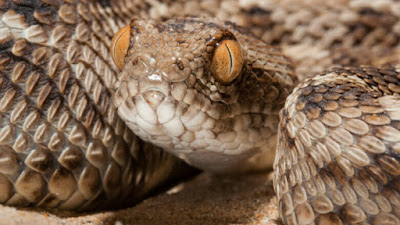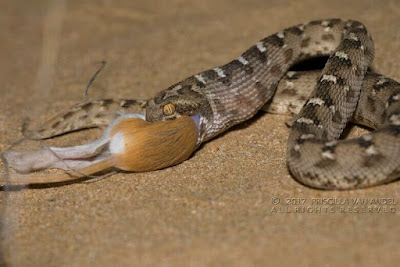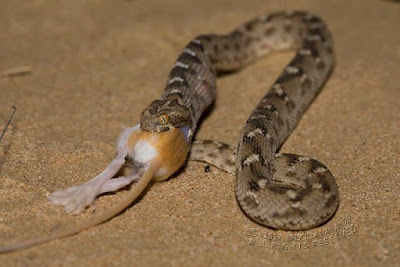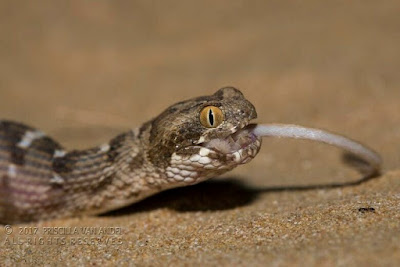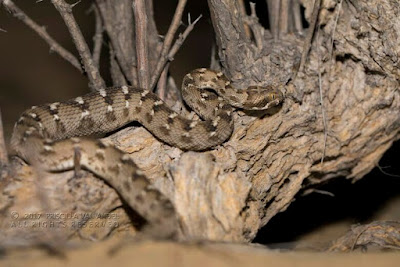The sands bear telltale signs of our quarry having moved across it quite recently.
But, the wind has already begun shifting grains of sand onto the tracks, so we hurry on to try and find the animal before we lose the trail completely.
Panting, we reach a little scrubby bush and look carefully all around it. No sign of anything!
Then, when we get down on our knees and carefully peer beneath the foliage, we see the typical patterning on one coil of the saw-scaled viper.
The reason this particular one was special after seeing hundreds of saw-scaled viper throughout my life, was that this snake was in Rajasthan and a different subspecies from the one I was used to.
Saw-scaled vipers in South India belong to the subspecies Echis carinatus carinatus and grow to a maximum length of about 40 cm.
The ones in Rajasthan are Sochurek’s saw-scaled viper (Echis carinatus sochureki) and grow to twice that length.
Aside from the disparity in size, Sochurek’s saw-scaled vipers have a very different pattern from their southern cousins.
These enigmatic vipers get their name from rows of strongly keeled scales along their sides, which are oriented upward as opposed to backward, which is the norm in most snakes.
When threatened, the saw-scaled viper bunches its body into a tight ‘S’ shape, and moves to rub these scales together, creating a raspy sound, much like a tiny saw.
It’s truly a spectacle to watch these little snakes create such a significant sound with their scales. The process by which animals rub body parts together to make sounds is called stridulation.
Another adaptation to life on the dunes is the sidewinding movement that these snakes adopt so they can move efficiently on a substrate that offers little traction.
It’s what enables us to identify the unique tracks they leave behind.
The group of snakes called saw-scaled vipers includes twelve species currently. India has one species with the two subspecies.
Having said that, it is quite likely that further taxonomic work will split this into more species within the country.
This group of snakes is believed to be involved in the most number of snakebite cases in the world, and in Africa they are believed to cause the highest number of deaths.


